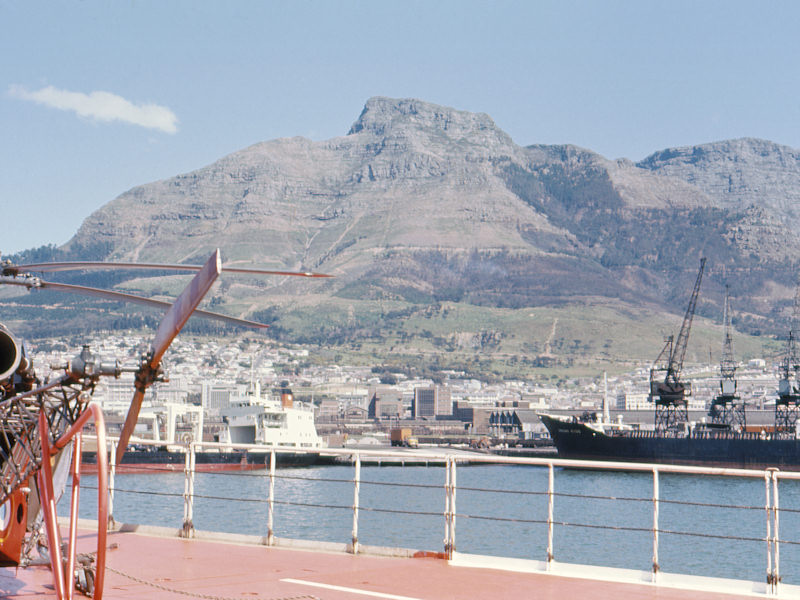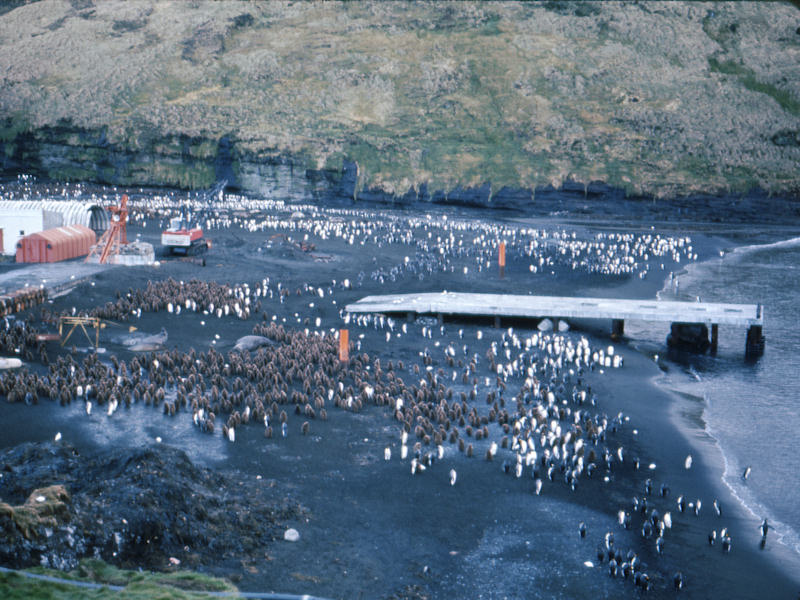
Photo album: "From Paris toward Kerguelen"
Fly over a photo with the mouse to enlarge it
Click on a photo to open it in a new window
This time I don't follow the usual route, I start earlier in the year, on September 23rd 1974, and for a summer campaign longer than the last ones, 6 months. We will travel on another ship, Marion-Dufresne, which began its service last year. Its home port is Marseille, it belongs to the Messageries Maritimes (MM) company and is charted by the administration of the French Southern and Antarctic Territories (TAAF) to supply the scientific bases of south Indian Ocean (Kerguelen, Crozet and Amsterdam) and perform oceanographic research. Since the Suez canal has been closed since 1967, after the Six-Day war, the ship has to pass through Gibraltar strait, to sail around Africa and to go beyond the cape of Good Hope to enter the Indian Ocean. We will join her in Cape Town, South Africa. We will proceed, then, our journey toward Kerguelen islands where we will arrive on October 5th 1974, after two short calls (Marion island and Crozet islands).
 |
On September 23rd, 1974, en route to Kerguelen, first stop in Libreville: an aeroplane of Air Gabon. |
 |
From the helicopter platform, at the rear of the ship, I look at the Table Mountain (approximately 1100-metre high) where we are going, with a few colleagues, on an excursion. |
 |
From the cabin of the cableway we have a panoramic view over Cape Town and the harbour. |
 |
Looking upwards, we can see the cable disappearing inside the clouds which hide the upper station. |
 |
Table Mountain is a National
Monument under the protection of the Table Mountain Preservation Board.
Flora and fauna are protected. From the top of the mountain we enjoy a beautiful panorama. |
 |
Along the side of the mountain, clouds are developing at a breathtaking speed. |
 |
Cape Town seen from the lower station of the cableway. |
 |
Back to the city, we have a last
look at the Table Mountain . The clouds hiding its top are tinted of pink
by the setting sun. We are living tomorrow! |
 |
On September 26th 1974, we have left Cape Town for a few hours and sailors are taking advantage of the fine weather to add a coat of paint to a crane. |
 |
An albatross is flying alongside the ship. |
 |
On the beach, we perceive adult royal penguins of clear colour if they are facing us or dark colour is the are looking the other way. The young royal penguins are uniform brown coloured. |
 |
On the shore, adult royal penguins. At the foreground, the white bird is a chionis (chionis minor crozettensis). |
 |
At foreground a big male elephant seal, a "pasha" as they call them here, shouts a warning (well visible because of the vapour coming out of its mouth in the cool morning): "Stay away from me!" |
.
.
.
.
.
.
.